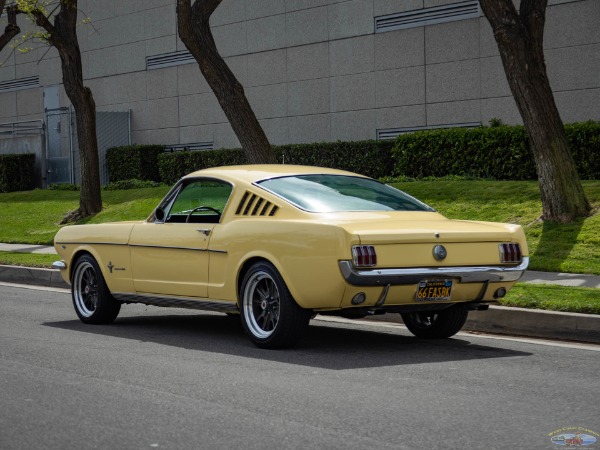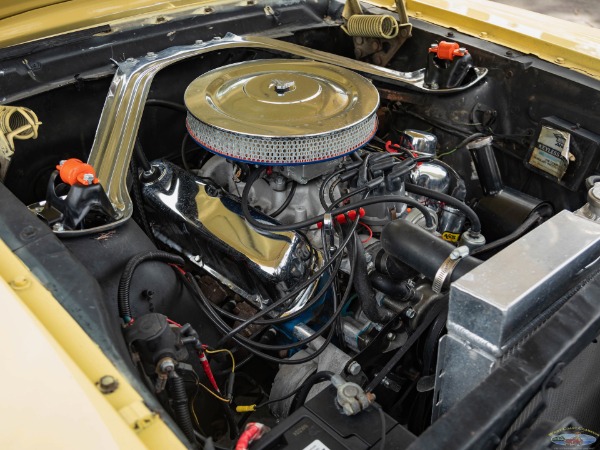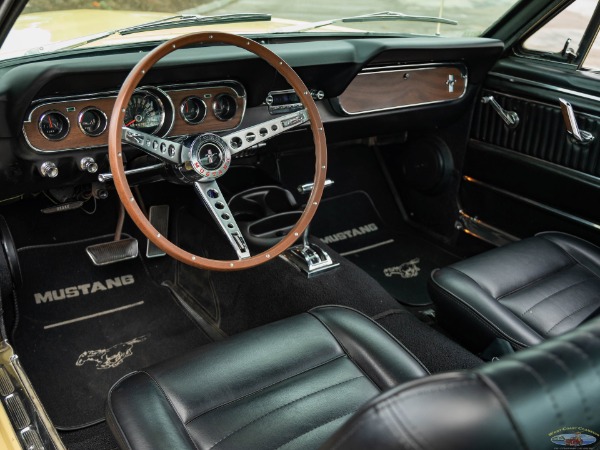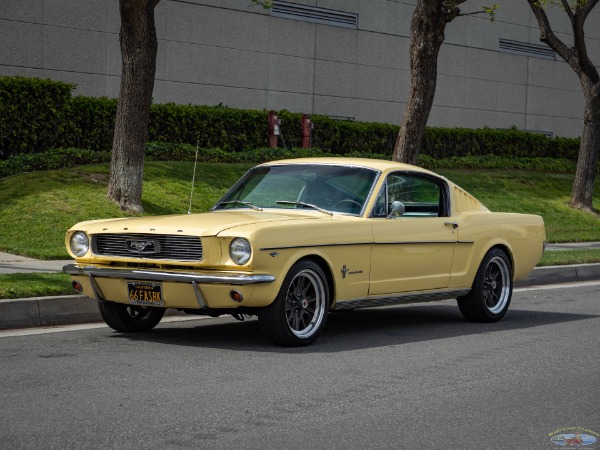Ford’s Formative Ventures
Initially, Henry Ford founded the Ford Motor Company in 1903, revolutionizing automotive production with the Model T. Subsequently, the introduction of the moving assembly line in 1913 drastically reduced costs, making cars accessible to the masses. Moreover, Ford’s V8 engine, launched in 1932, set new performance standards. Additionally, post-WWII innovations cemented Ford’s reputation for quality and ingenuity. Furthermore, the creation of the Mustang in 1964 showcased Ford’s ability to capture the public’s imagination.

OUR 1966 Ford Mustang 289 V8
‘We are proud to present a great daily driving and mildly customized example of this 1966 Ford Mustang Fastback 2+2 coupe which was built in San Jose, California and born with a 289 2V ‘C’ code V8 engine with an automatic C4 transmission, in its original ‘Springtime Yellow’ factory color paint, luxury ‘Black Pony’ plush interior Decor option trim which includes plush door panels with integrated molded arm rests and ‘Pony’ front seats, a deluxe steering wheel in simulated walnut studded with eighteen bright recessed dots, brushed with metal spokes pierced with 12 circular holes, and with custom wheels and tires.’
Unveiling the Mustang Fastback
In 1965, Ford introduced the Mustang Fastback, a model that quickly captured the hearts of American drivers. Consequently, the 1966 model refined its predecessor’s success with enhanced features and performance. Additionally, the Fastback’s sleek design and powerful engine options solidified its appeal among enthusiasts.
Engine Excellence
Under the hood, the 1966 Mustang Fastback boasted a 289 cubic inch V8 engine. Importantly, this engine produced 225 horsepower, offering significant performance. Furthermore, the option for a high-performance version elevated the output to 271 horsepower, captivating speed enthusiasts.

Interior Ingenuity
Inside, the Fastback offered a luxurious yet functional cabin. Specifically, the design focused on driver comfort and sporty aesthetics. Moreover, features like the fold-down rear seat increased its practicality, demonstrating Ford’s attention to detail.
Production Prowess
Ford’s manufacturing prowess allowed for the widespread availability of the Mustang. Consequently, the Fastback model enjoyed high production numbers, making it a common sight on American roads. Additionally, Ford’s ability to offer various customization options made each Mustang feel personalized.
OUR OTHER INVENTORY
Racing Legacy
The Mustang’s racing history is filled with notable achievements. Notably, the 289 V8 engine propelled the Fastback to success in various competitions. Furthermore, its performance in SCCA events and endurance races underscored Ford’s engineering excellence.
Design and Distinction
The Fastback’s design was the result of collaboration between Ford’s in-house team and leading automotive designers. Initially, the goal was to create a vehicle that was both aesthetically pleasing and aerodynamically efficient. Moreover, the Fastback’s iconic profile became a symbol of 1960s American muscle.

Significance and Legacy – 1966 Ford Mustang 289 V8
Finally, the 1966 Ford Mustang 289 V8 2+2 Fastback remains a beloved classic. Not only does it represent a pivotal moment in automotive history, but it also exemplifies Ford’s dedication to performance and style. Moreover, its enduring popularity among collectors and enthusiasts highlights its significant impact on car culture.

